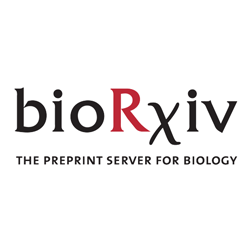
bioRxiv Bioinfo
@biorxiv_bioinfo
Followers
18K
Following
0
Media
0
Statuses
25K
Joined June 2016
Rethinking Molecular Beauty in the Deep Learning Era https://t.co/o6tgJjD9wx
#biorxiv_bioinfo
biorxiv.org
As (deep) generative chemistry rapidly enters the landscape of drug discovery, evaluating the models and their structural output relevance, tractability, and innovation potential becomes both a...
1
0
13
GatorSC: Multi-Scale Cell and Gene Graphs with Mixture-of-Experts Fusion for Single-Cell Transcriptomics https://t.co/BKZ2ntca92
#biorxiv_bioinfo
biorxiv.org
Single-cell RNA sequencing (scRNA-seq) enables high-resolution characterization of cellular heterogeneity, but its rich, complementary structure across cells and genes remains underexploited,...
0
0
3
Unified Probabilistic Analysis of CyTOF: A Deep Generative Approach using CytoOne https://t.co/4IhbjIvSkg
#biorxiv_bioinfo
biorxiv.org
Extracting meaningful biological signals from Cytometry by time-of-flight (CyTOF) data remains challenging due to heterogeneity, data characteristics, and the presence of various technical artifacts....
0
0
1
XC-ID: De novo identification of the active X chromosome in single-cell RNA-seq https://t.co/P2fRUVHEo4
#biorxiv_bioinfo
biorxiv.org
Motivation: X chromosome inactivation (XCI) is an epigenetic process that equalizes X-linked gene dosage between females (XX) and males (XY). During early development, one X chromosome in each cell...
0
0
0
Uniform pre-processing of bacterial single-cell RNA-seq https://t.co/b12SzGxMz3
#biorxiv_bioinfo
biorxiv.org
Bacteria are highly heterogeneous, even under controlled conditions, making single-cell RNA sequencing (scRNA-seq) essential for studying microbial diversity and symbiosis. Since its first applicat...
0
0
0
predPPI-GReMLIN: prediction of protein-protein interactions through mining of conserved bipartite graphs https://t.co/bWxe7LqjqN
#biorxiv_bioinfo
biorxiv.org
Protein–protein interactions (PPIs) play a central role in elucidating cellular mechanisms. However, a substantial gap remains in current prediction models, as they frequently overlook the structural...
0
0
2
Genomic foundation models reveal RNA-binding proteins regulating translation and mRNA degradation during Drosophila development https://t.co/RMuCEYAVi9
#biorxiv_bioinfo
biorxiv.org
Background The regulation of mRNA decay and translation is crucial for cellular function and development; however, the complex interplay of RNA-binding proteins (RBPs) regulating these processes...
0
2
9
Metax: A Coverage-Informed Probabilistic Framework for Accurate Cross-Domain Taxon Profiling https://t.co/TZ1qJthTqF
#biorxiv_bioinfo
biorxiv.org
Metagenomic taxonomic profiling is essential for characterizing microbial community composition in both environmental and clinical contexts. Existing profilers have greatly advanced community...
1
0
3
DeepRank-Ab: a dedicated scoring function for antibody-antigen complexes based on geometric deep learning https://t.co/qK8YFmWFTn
#biorxiv_bioinfo
biorxiv.org
Gaining structural insights into the interactions between antibodies and their corresponding antigens is essential for understanding immune recognition and for guiding therapeutic antibody design....
0
0
1
FungiGutDB: Curated database for taxonomic assignment of the gut mycobiome by whole genome sequencing https://t.co/FL13WSN5r9
#biorxiv_bioinfo
biorxiv.org
Fungi represent less than 1% of the gut microbiota; However, their importance in host homeostasis and disease is increasingly recognized. Accurate characterization of the gut mycobiome from metagen...
0
1
2
Phenotype-driven parallel embedding for microbiome multi-omic data integration https://t.co/O07yrxw1a0
#biorxiv_bioinfo
biorxiv.org
The human microbiome is widely recognized as a key determinant of health and disease, yet most reported links between observed microbial features and clinical outcomes remain descriptive and lack an...
0
0
1
BrainBridge Characterizes Key Factors affecting Alzheimer's Disease and Associated Phenotypes https://t.co/5p4j9fDZAG
#biorxiv_bioinfo
biorxiv.org
Single-cell RNA sequencing (scRNA-seq) has significantly advanced our understanding of Alzheimer's disease and aging by revealing cellular heterogeneity and shifts in cell-type composition between...
0
1
0
Revealing Interactions between Microbes, Metabolites, and Dietary Compounds using Genome-scale Analysis https://t.co/dGI9kaAyh5
#biorxiv_bioinfo
biorxiv.org
The role of gut microbiome in predicting diet response and developing personalized dietary recommendations has been increasingly recognized. Yet, we still lack comprehensive, genome-based insights...
0
0
3
geneSCOPE: gene Spatial Co-Occurrence of Pairwise Expression https://t.co/YDmGKPdfK6
#biorxiv_bioinfo
biorxiv.org
Spatial transcriptomics captures neighborhood–dependent gene expression, but existing workflows do not always fully account for measurement scale and often treat space implicitly. We present geneSC...
0
1
2
gffutilsAI: An AI-Agent for Interactive Genomic Feature Exploration in GFF files https://t.co/SOSIw8o0fE
#biorxiv_bioinfo
biorxiv.org
The General Feature Format (GFF) is widely used to represent genomic annotations, but its hierarchical, multi-attribute structure makes manual querying and analysis challenging. Existing libraries...
0
2
11
SigSpace: an LLM-based agent for drug responsesignature interpretation https://t.co/dNOBzQpRry
#biorxiv_bioinfo
biorxiv.org
Agent systems powered by large language models (LLMs) are increasingly applied in computational biology to automate analysis, integrate data, and accelerate discovery. Here, we investigate the...
0
2
2
Comparative evaluation of reference genomes and cell-type annotation frameworks for single-nucleus transcriptomic analysis in apple https://t.co/rs6AxUb6Nr
#biorxiv_bioinfo
biorxiv.org
Single–nucleus RNA sequencing (snRNA–seq) provides a powerful tool to profile cell–type–specific transcriptional programs in woody fruit trees. Yet its application in Malus domestica has been limited...
0
0
1
MetaPointFinder: Detection of Antimicrobial Resistance-Conferring Point Mutations (ARMs) from Metagenomic Reads https://t.co/VyHb0B18hC
#biorxiv_bioinfo
biorxiv.org
Background: Many clinically important antimicrobial resistance (AMR) phenotypes such as fluoroquinolones and rifamycins are driven by antimicrobial resistance-conferring mutations (ARMs) in conserved...
0
0
0
High-Quality Synthetic Annotated Tissue Data Using Conditional Generative Adversarial Networks https://t.co/TDu4soPgWP
#biorxiv_bioinfo
biorxiv.org
We present a deep-learning based pipeline for generating high-quality synthetic instance-segmentation datasets of tissues undergoing early gastrulation in chick embryo. We create point-clouds using...
0
0
0
VUSVista: Enhancing the Curation of Variants of Uncertain Significance https://t.co/GE7BC86GZJ
#biorxiv_bioinfo
biorxiv.org
Background: The increased demand for genomic sequencing has consequently led to a rise in the number of Variants of Uncertain Significance (VUS), which are classified as such due to insufficient...
0
3
11

